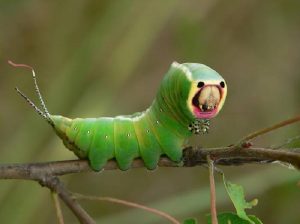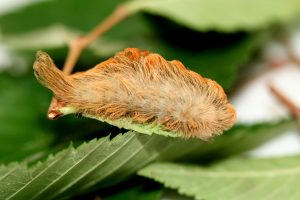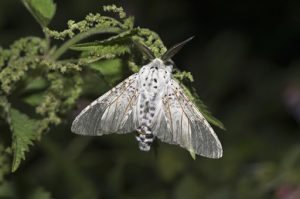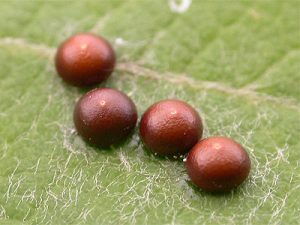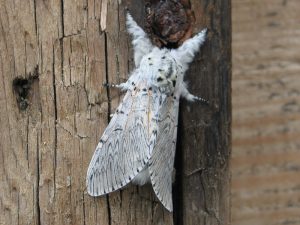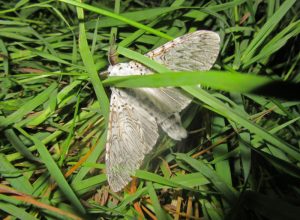Puss Moth (Cerura vinula)
Puss moth of the lepidopteran order is a part of the Notodontidae family, spreading throughout Europe, Asia, and China. Overall, these moths have a fluffy appearance just like a cat, earning them the name puss moth.
butterfly-conservation.org
Scientific Classification
- Family: Notodontidae
- Genus: Cerura
- Scientific Name: Cerura vinula
Description and Identification
Caterpillar
When young, they are entirely black. As they mature, the larvae turn light green with a purplish-brown or blackish-brown pattern in its dorsal region bordered in yellow or white. At the abdomen’s end lies a tail fork, with two dark tips, bearing an extendable red flagellae (whip-like appendage). They grow to a length of 8 cm, occurring between July and September. Before pupating within a hard cocoon that they spin on the trunk of a tree, the caterpillar goes on to strip the stems of their host plants’ leaves.
Adult Moth
Sexual Dimorphism: Present
The male puss moths are smaller than their female counterparts, and both the sexes also differ in color when it comes to their hindwings.
Color and Appearance
Forewings: When opened, it is yellowish-gray or white with dark, wavy lines running across. When closed, it is all the more the same, with a lesser number of lines visible.
Hindwings: When opened, they are whitish or light gray in males and blackish in females. When closed, the pattern remains unchanged.
Average Wingspan: 5.8 – 7.5 cm
Flight Pattern: Not recorded
Season: April – August
Quick Facts
| Distribution | Throughout Europe, parts of Asia, and also North Africa |
| Habitat | Dense woodland regions |
| Predators | Birds, rats, bats |
| Lifespan of Adults | Not recorded |
| Host Plants | Poplar and willow |
| Adult Diet | Leaves of their host plants |
Did You Know
- Swedish botanist Carl Linnaeus, in his 10th edition of Systema Naturae published in 1758, described these moths for the first time.
- They five subspecies in total like Cerura vinula estonica, Cerura vinula phantom, and Cerura vinula vinula.
- If threatened, the larva sprays formic acid upon its predator as a defense mechanism.
Scientific Classification
- Family: Notodontidae
- Genus: Cerura
- Scientific Name: Cerura vinula


